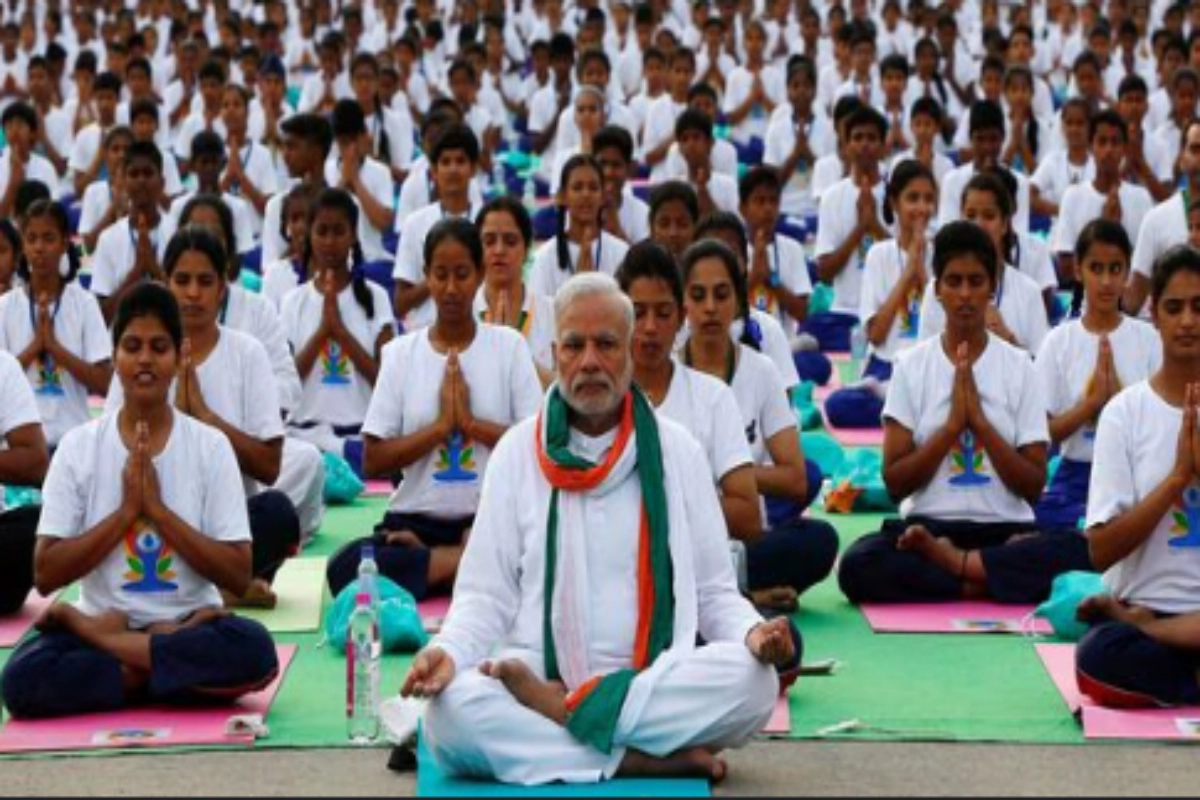International Yoga Day 2024: Prime Minister Narendra Modi has shared some asanas on social media site X with just one day remaining before the International Day of Yoga. The goal of this initiative is to raise awareness about yoga and its advantages. A few instructional movies featuring an animation showing how to do a specific yoga pose were posted by PM Modi. Here are 7 Yoga Asanas that PM Modi swears by.
Shashankasana
The Rabbit Pose, or Shashankasana, is a yoga pose that promotes mental clarity, flexibility, and relaxation. Inspired by the calming effect of the moon, Shashankasana is a position that attempts to generate a feeling of peace and mental clarity. The words “Shashank” and “Asana” in Sanskrit represent moon and pose, respectively.
Starting Position: Kneel on the floor with your big toes touching and your knees hip-width apart. In Vajrasana (Thunderbolt Pose), sit back on your heels, making sure your spine is straight.
Inhale: Keep your arms shoulder-width apart as you raise them above your head.
Exhale: Bending from the hips, slowly extend your arms in front of you. With your arms outstretched and palms down, try to bring your forehead in contact with the floor.
Relax: Give your body time to unwind into the position. Your buttocks should stay in contact with your heels, and your abdomen should rest on your thighs.
Hold the Position: For a few breaths, hold this position, emphasizing slow, deep inhalations and exhalations. This can take anywhere from a few minutes to thirty seconds, based on how comfortable you are.
Release: Breathe in, raise your torso slowly back to the beginning position, and put your arms back by your sides to release the pose.
Ustrasana
Yoga’s profound backbend pose, Ustrasana, also referred to as the Camel Pose, has numerous physical and emotional benefits. “Ustra” means camel, and “Asana” means position in Sanskrit, which is where the name “Ustrasana” originates. This pose is well-known for opening up the chest, lengthening the front body, and improving general strength and flexibility.
Bhadrasana
Bhadrasana, sometimes referred to as the Gracious Pose or Butterfly Pose, is a straightforward but powerful yoga pose that enhances inner peace, increases flexibility, and supports both physical and mental health. The Sanskrit terms “Bhadra” (a nice or auspicious thing) and “Asana” (a stance) are the source of the name “Bhadrasana”. This asana is a favorite among practitioners of all skill levels because it is very good for the hips, groin, and inner thighs.
Padahastasana
`
A basic yoga pose called Padahastasana (sometimes called the Hand to Foot Pose) requires bending forward such that the hands contact the feet. The Sanskrit terms “Pada” (meaning foot), “Hasta” (meaning hand), and “Asana” (meaning pose) are the source of the name “Padahastasana”. This pose is well known for its capacity to increase flexibility, extend the entire back, and enhance general health.
Ardha Chakrasana
The Half Wheel Pose, or Ardha Chakrasana, is a backbend yoga pose that improves spinal flexibility, strengthens the back muscles, and improves general balance and wellbeing. The Sanskrit terms “Ardha” (half), “Chakra” (wheel), and “Asana” (position) are the source of the name “Ardha Chakrasana”. This pose is well-known for its capacity to stretch the abdominal muscles, open the chest, and encourage vigor and energy.
Tadasana
One of the most basic and important yoga poses is called Tadasana, or Mountain Pose. It serves as the base for numerous other standing postures and is frequently employed at the beginning and conclusion of yoga sequences. The Sanskrit terms “Tada” (meaning mountain) and “Asana” (meaning position) are the source of the name “Tadasana”. This asana is essential to any yoga practice because it promotes balance, correct alignment, and attention.
Vrikshasana
A basic standing yoga pose that emphasizes balance, stability, and attention is called Vrikshasana, or the Tree Pose. From the Sanskrit words “Vriksha” (tree) and “Asana” (position), the name “Vrikshasana” is formed. This pose encourages a sense of rootedness and calmness by imitating the stable, grounded position of a tree.


